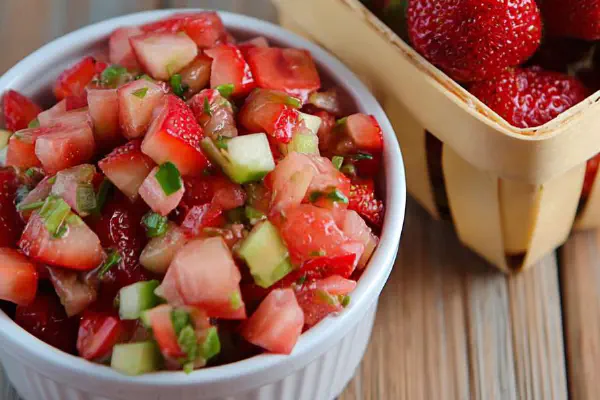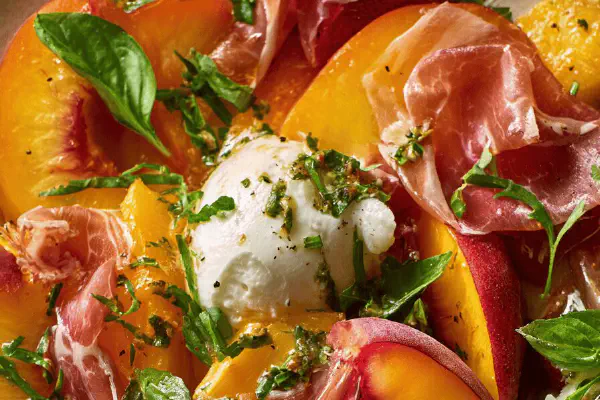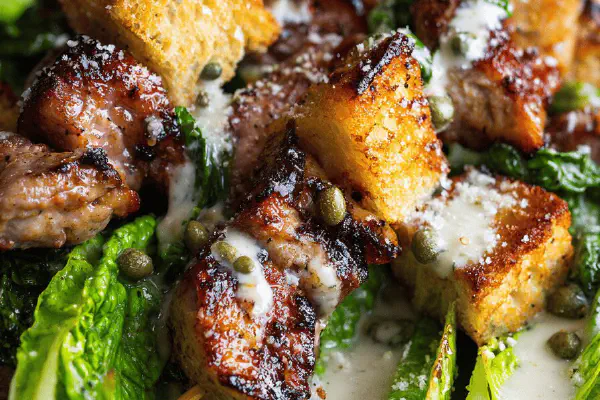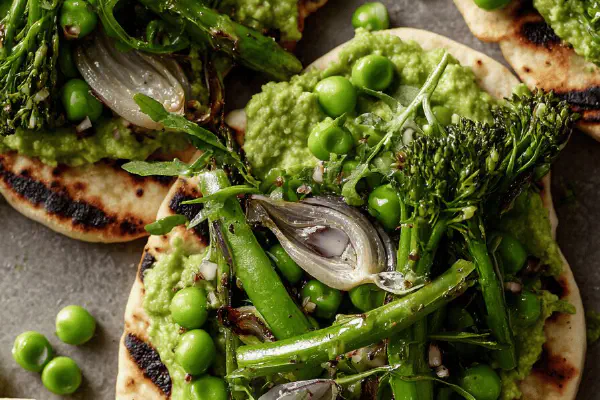Beef Couscous Kibbé
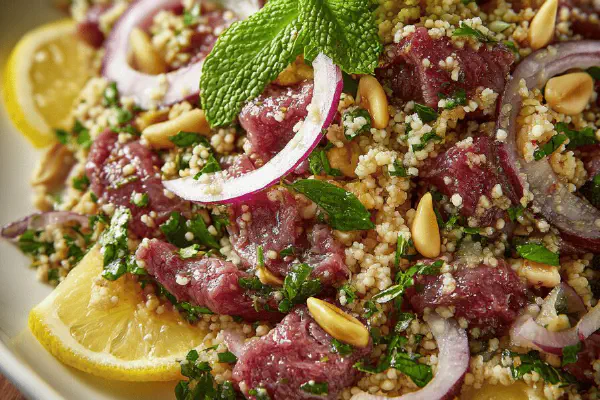
By Emma
Certified Culinary Professional
Ingredients
- 130 ml warm water
- 130 ml medium couscous (durum wheat semolina)
- 200 g lean fresh beef, choice of tender cut
- Extra virgin olive oil, amount as desired
- 10 fresh mint leaves, finely chopped
- Lemon slices, as preferred
- Thin slices of red onion, to taste
- Toasted pine nuts, to garnish
- Salt and freshly ground black pepper
About the ingredients
Method
- Heat water until just before boiling, not frantic bubbling but steady steam rising. Pour over couscous in a small saucepan or heatproof bowl. Cover tightly—lid or plate. Let it swell, about 6 minutes. You'll see the moisture absorbed, grains plump and separate. Fluff lightly with fork to loosen clumps. Cool completely before moving on or meat will wilt.
- Half the meat goes through a coarse grinder or pulse in food processor until crumbly but not mush. The other half diced into tiny cubes, adding textural contrast in the final dish. Keep chilled. Warm meat invites bacteria; keep cold and brief handling.
- In a mixing bowl, combine the chopped meat and diced cubes. Sprinkle in the chopped mint leaves. Pour olive oil gradually while mixing gently. Not drowning, just enough to bind and shine through. Season deliberately with salt and freshly cracked pepper. Mix but don’t overwork; want integrity of ingredients.
- Cover bowl tightly. Refrigerate about 20 minutes. Enough for flavors to marry and flesh to firm slightly but not turn paste-like. Timing is flexible — listen to your fridge hum and check texture.
- Arrange portions on chilled plates or a shallow platter. Hollow small wells or indentations in meat. Pour a small drizzle of olive oil into these pockets; a glossy shimmer, pooling richness.
- Scatter pine nuts, toasted until golden brown with a faint crackle and scent of toasted fat. Add thin red onion rings for bite and brightness. Arrange lemon slices, not too many—you want control over acidity.
- Serve immediately or keep refrigerated very briefly. Kibbé thrives cold, refreshing on palate yet robust texture keeps it interesting. Pita bread on side for contrast or alternative bites.
- In absence of pine nuts, use toasted pumpkin seeds but keep them dry and unsalted. If no fresh mint, substitute with flat leaf parsley and a squeeze of lemon for freshness. Dry couscous carefully or it won’t separate properly, fluff it well.
- Common trap: overmoist couscous leads to mushy blend; better to slightly under-soak and adjust with olive oil. Over-chopped meat kills bite — don’t grind too finely.
Cooking tips
Chef's notes
- 💡 Water temp crucial; not boiling, just steam rising. Too hot cramps grains, mush results. Cover tight lid or plate traps moisture evenly. Fluff gently with fork, not spoon. Separate grains key, prevents gluey mush around meat. Timing chill matters; less than 15 mins underdeveloped. Overchill? Paste texture kills bite. Watch fridge hum or feel meat texture by touch.
- 💡 Meat prep split: coarse grind one half, dice other half tiny cubes. Grinder too fine equals paste. Knife skills really show here. Cubes add mouthfeel contrast, stop monotony. Keep all chilled during prep — warm meat breeds bacteria fast. Work quickly, minimal hands-on time. Mixing gentle; oil adds shine, not drowning. Use butter knife or spatula, avoid vigorous stirring which breaks grains and melts fat.
- 💡 Mint hold flavor integrity here. Fresh best but frozen thawed works if no other. Parsley and squeeze lemon as back up but less pungent. Lemon slices thin, avoid pith bitterness. Spritz lemon wedges over plated kibbé for bite, not soaking the whole dish. Salt very cautious; raw meat exaggerates saltiness. Olive oil quality non-negotiable: fruity or peppery extra virgins add mouthfeel nuance.
- 💡 Pine nuts toast watch closely. From gold to burnt in few seconds. Use skillet, toss often, listen for faint crackle sound. Substitute pumpkin seeds dry roasted if pine nuts scarce, no salt added or moisture. Walnuts or almonds chopped rough change texture and oil release. Red onions thin sliced; thick slices overpower or dull brightness. Layers of garnish balance salt crunch acidity.
- 💡 Couscous grain size vital; medium or coarse semolina best. Fine turns gluey, sticks. Bulgur standing in requires longer soak and rinse well or grain falls apart. If grain overhydrated, fluff well and add extra olive oil to separate. Under-soaked better than over. Tossed in bowls before meat folds in keeps grains alive. Avoid pressing or shaping; airiness lost quickly. Let rest time flexible, texture checks more reliable than clock.
Common questions
What if couscous lumps?
Probably soaked too long or water too hot. Fluff repeatedly with fork, add a little olive oil, separate gently. Under-soak next time. Don’t rush soaking; grains need steam but not collapse. If desperate, dry toast couscous briefly off heat to loosen.
Can lamb replace beef?
Yes, fattier so less olive oil needed. Texture richer, stronger flavor. Chill even more thoroughly; lamb fat softer at room temp. Dice size might need adjusting for chewiness. Mint still mandatory or taste heavier. If no lamb, add pinch cumin in beef mix.
Why does meat turn paste?
Grinder too fine or meat overworked while mixing. Lots of chopping kills texture. Use coarse grinder and dice half meat. Mix slow, gentle strokes, no pounding or over-stirring. Olive oil helps slide pieces without breaking. Keep cold; warm meat breaks down protein faster, turns gluey.
How to store leftovers?
Cover tightly, keep in fridge max day or two. Raw meat risk rises fast. Don’t freeze, texture ruins. Best plated fresh. If ready made chill longer, expect softer texture, slightly dull aroma. If smelling off or slimy, discard. Serve cold, avoid room temp exposure over one hour.
